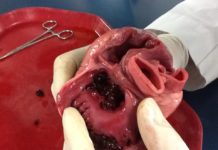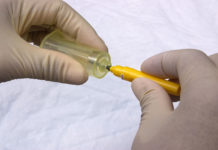
Waiting for a “healthier” heart often leads to lower survival rates, new research shows
Heart from an ailing donor may lead to better transplant outcomes rather than waiting for a healthy heart, shows new research.
Accepting an organ that has an increased risk of potentially transmitting disease offers a higher one-year survival rate for candidates on the heart transplant list. Survival rate is lower when patients and doctors wait for an organ with less risk, according to a study published today in the Journal of the American College of Cardiology.
Increased risk donors make up a growing number in the donor pool for organs, offering a potential strategy to reduce waitlist mortality for patients awaiting transplant.
For many of these patients, the benefit of proceeding with transplantation sooner outweighs the low risk of disease transmission associated with these donors.
The benefits of proceeding with transplantation sooner outweighs the low risk of disease transmission associated with these donors
Increased risk donors are defined as organ donors who carry an increased risk for inadvertent disease transmission to the transplant recipient, including HIV, Hepatitis B Virus and Hepatitis C Virus. In 2015, increased risk donors represented 19.5 percent of the donor pool.
“For patients with end-stage heart failure, heart transplantation is not only the gold-standard of care but an increasingly-utilized therapy by clinicians treating these patients,” said Michael S. Mulvihill, MD, a surgical research fellow in the division of cardiovascular and thoracic surgery at Duke University. “Through this study we discovered that acceptance of an increased risk donor heart offer has a significant survival benefit that should be part of the shared decision-making process for clinicians and patients.”
Of the patients who declined the initial increased risk donor offer, 58 percent underwent a non-increased risk donor heart transplant, 12.4 percent underwent a later increased risk donor heart transplant, 7.9 percent were removed from the waitlist due to death or decompensation, and 21.1 percent were still waiting for a heart transplant one year after the initial offer.
Patients who accepted the initial increased risk donor offer had 92.1 percent survival rates after one year compared to 83.1 percent for those who declined. Researchers found this benefit persisted five years post-offer.












